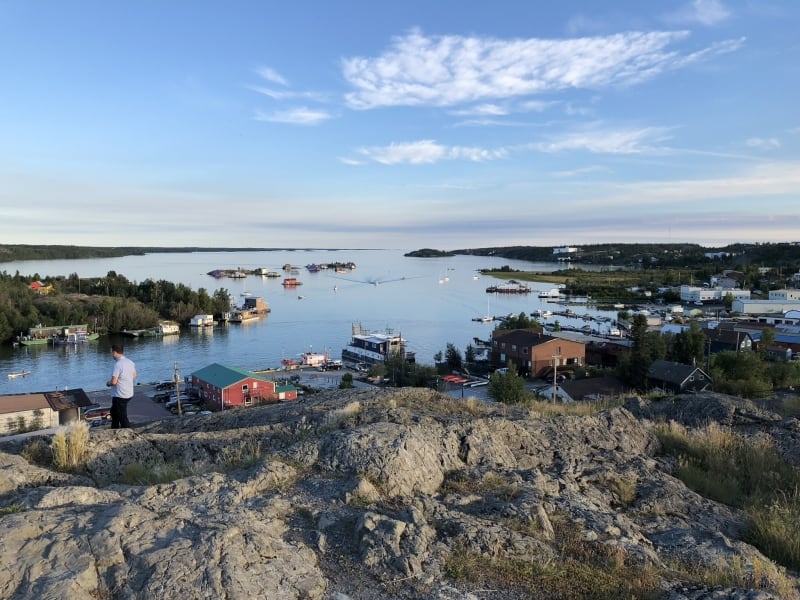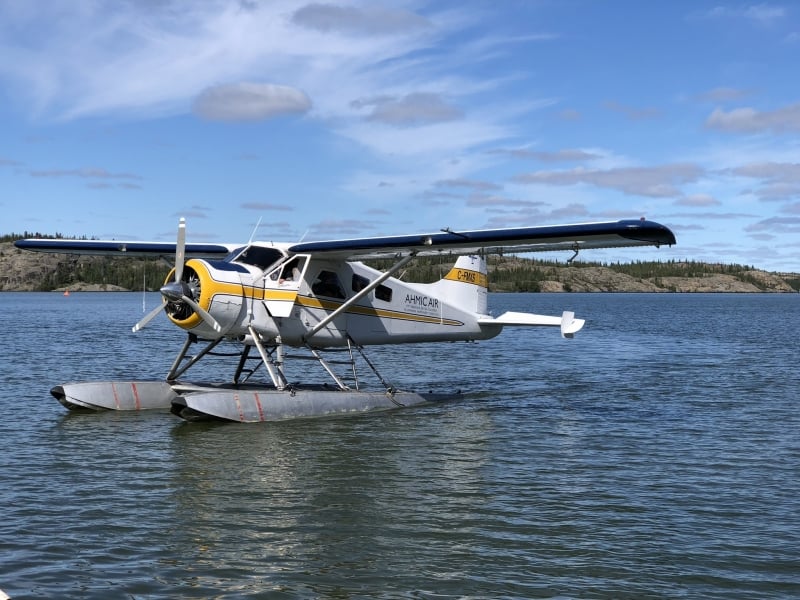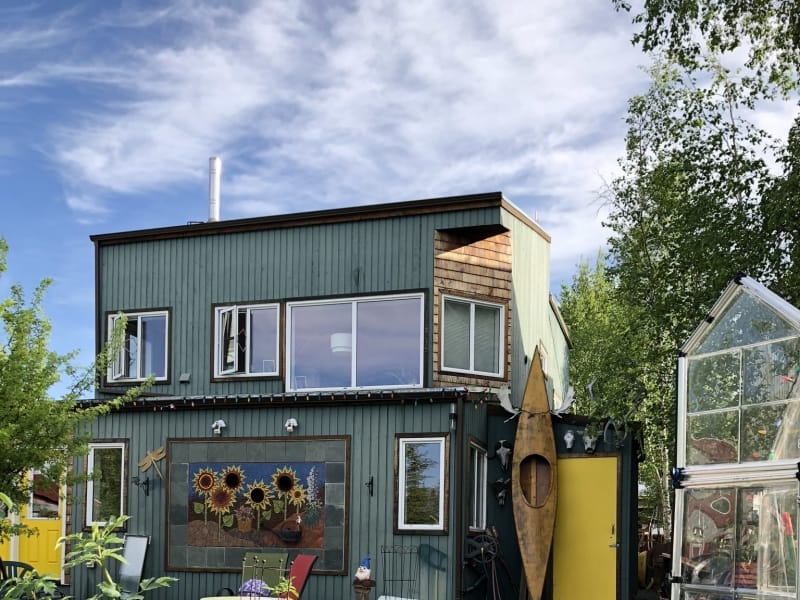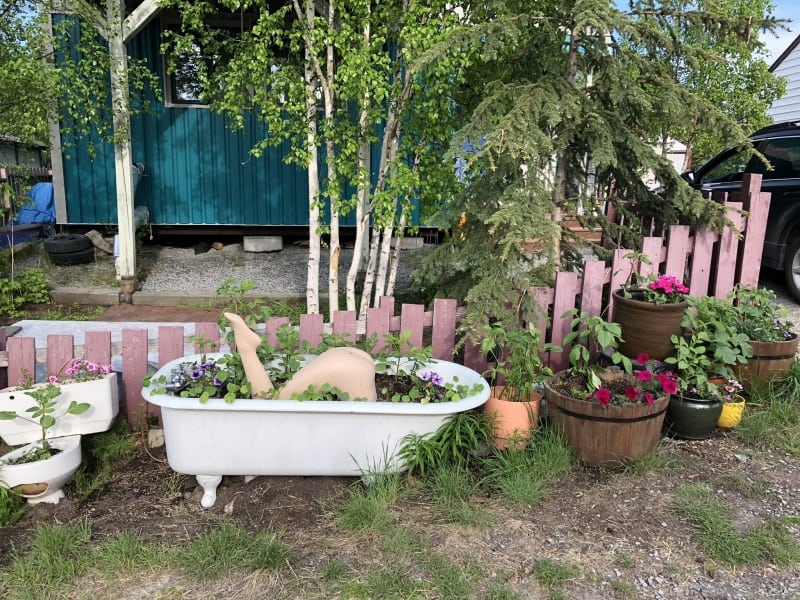Yellowknife’s Quirky Old Town
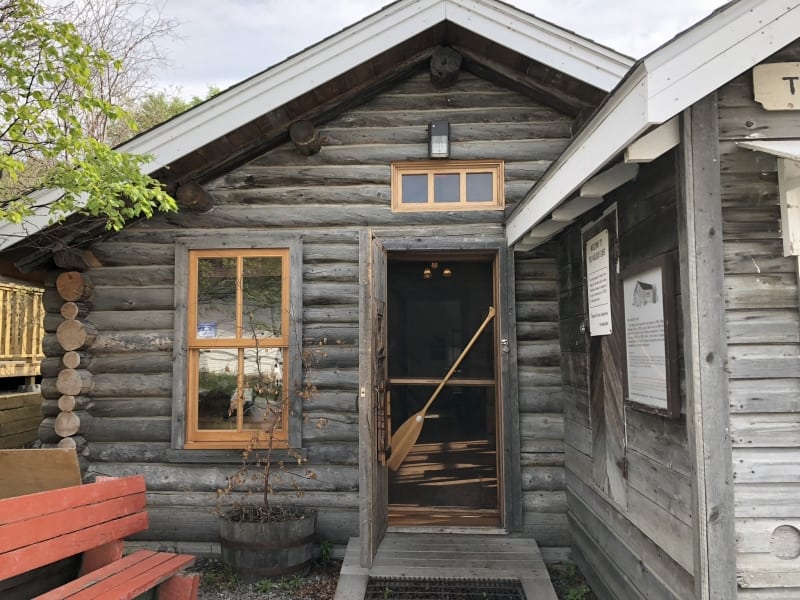
Yellowknife Old Town is replete with character
Yellowknife is said to be full of character and characters. Nowhere is this more evident than in Yellowknife Old Town and Latham Island. I could tell you how quirky it is, but this is one of those ‘show-me-don’t-tell-me’ opportunities.

You’re just as likely to see float planes tethered to the dock as a canoe or pleasure craft on Back Bay in Yellowknife Old Town
As you would expect, Yellowknife Old Town is the original settlement. Old Town is on a peninsula at the end of the mainland. It is connected by a causeway to Latham Island, and surrounded on three sides by water.
Yellowknife Old Town takes some of its flavour from the water. Year round houseboats create a colourful off-grid and off-taxes option to accommodations right within the city. Living on the shore of one of the largest lakes in the world encourages a strong pleasure-boating culture.
Pioneering roots
The 1930s saw the establishment of Yellowknife on the shore of Great Slave Lake. It grew up as a pioneer outpost in support of gold prospectors.

The Wildcat Cafe is one of the only original buildings left in Yellowknife Old Town. A log cabin, it was the local meeting place for prospectors. Today it’s a trendy seasonal restaurant where diners can taste some local specialties like Great Slave Lake whitefish.
From the patio of the Wildcat Cafe, diners can watch float planes land on Back Bay of Great Slave Lake.
Yellowknife Old Town grew up before the arrival of traditional municipal infrastructure like running water and electricity. And while it is now part of a modern capital city, some of the infrastructure never did materialize, at least in Old Town. Old Town still receives its water by truck in the winter and through a land-based water line in the summer. And er… “used” water is stored in in-house tanks until such time as the pump-out truck comes to remove and dispose of it.
It is a unique way of life to an outsider looking in. But it’s just another day in the life of a Yellowknifer. It attracts a certain kind of character to live there.
Character houses

Just one of many custom homes in Yellowknife Old Town where the artist/owner has applied their signature. The sunflowers are a mosaic, and the centres of the flowers are windows.

To be called a shack in Yellowknife Old Town is not necessarily pejorative. This shack wears local artwork and is fits perfectly in the Old Town milieu.
Artists homes replete with art and craft works sit alongside veritable mansions built into the shape of the Canadian Shield, which themselves sit side by side rustic shacks that are still without running water.

In Yellowknife Old Town, you’ll find massive modern homes shoulder-to-shoulder with quirky artistic houses and shacks with no running water.

This is one of my favourite houses in Old Town, featuring artworks integrated into the home’s exterior.
Homes border the shore of Great Slave Lake, and may equally have a floatplane as a pleasure boat or canoe tethered to the dock.

Many Yellowknife Old Town and Latham Island residents have lake shore property on Great Slave Lake. Looking more like cottage country than a Canadian capital city, many Yellowknifers enjoy a cottage lifestyle.
Take a walk
When you come to Yellowknife in the summer you have the benefit of wonderfully long 20-hour days. What better to do at any time of day or night than to take a walk through the winding streets and back roads of Yellowknife Old Town and down around Latham Island. You just might find Lois Lane, named for Margot Kidder, the actress who played the part and grew up in Yellowknife.
 Or you might come across Ragged Ass Road, the road name that inspired Tom Cochrane to name his album.
Or you might come across Ragged Ass Road, the road name that inspired Tom Cochrane to name his album.
Don’t be afraid of getting lost. It is a small town, and the people are as friendly as Old Town is quirky. They’ll happily set you straight if you need it.
Dornbos lane
Yellowknife

